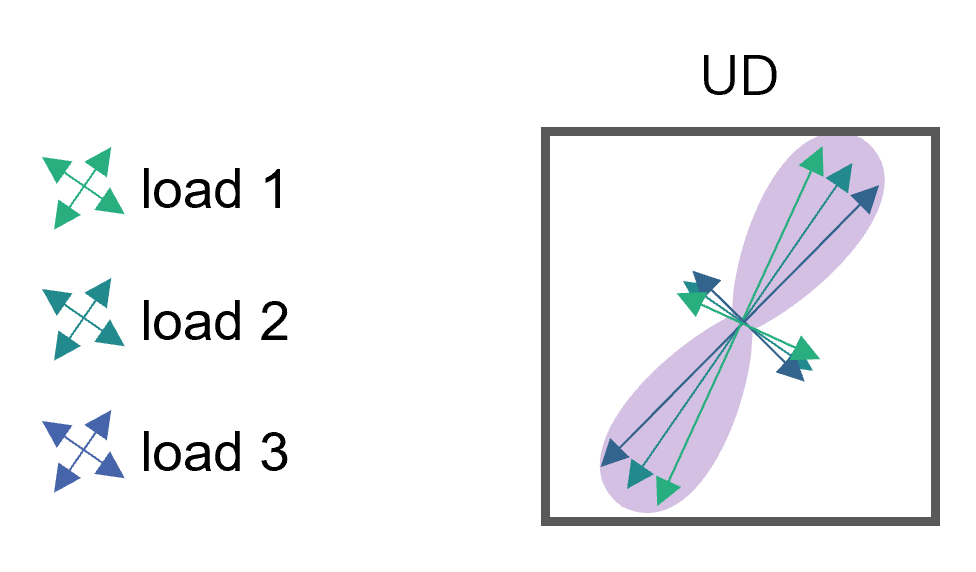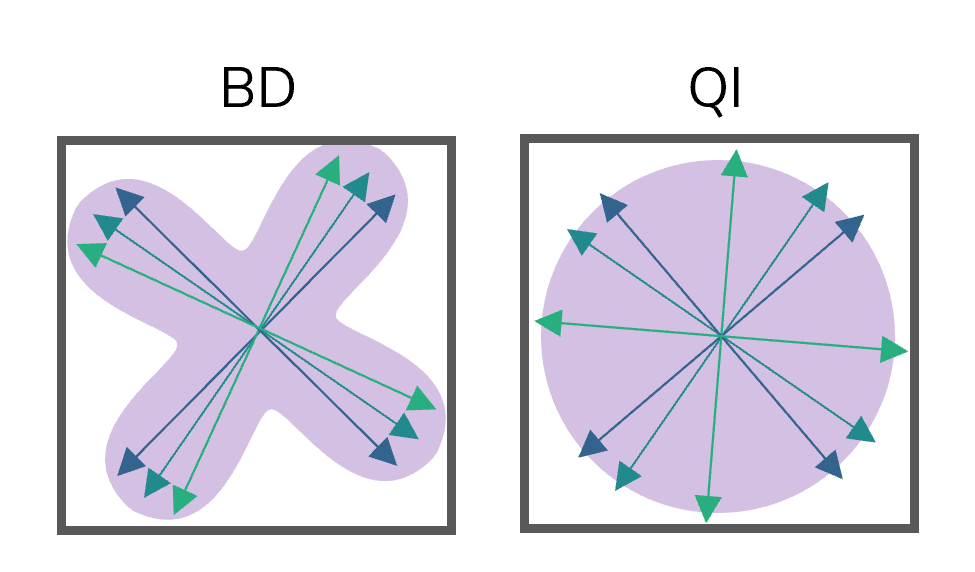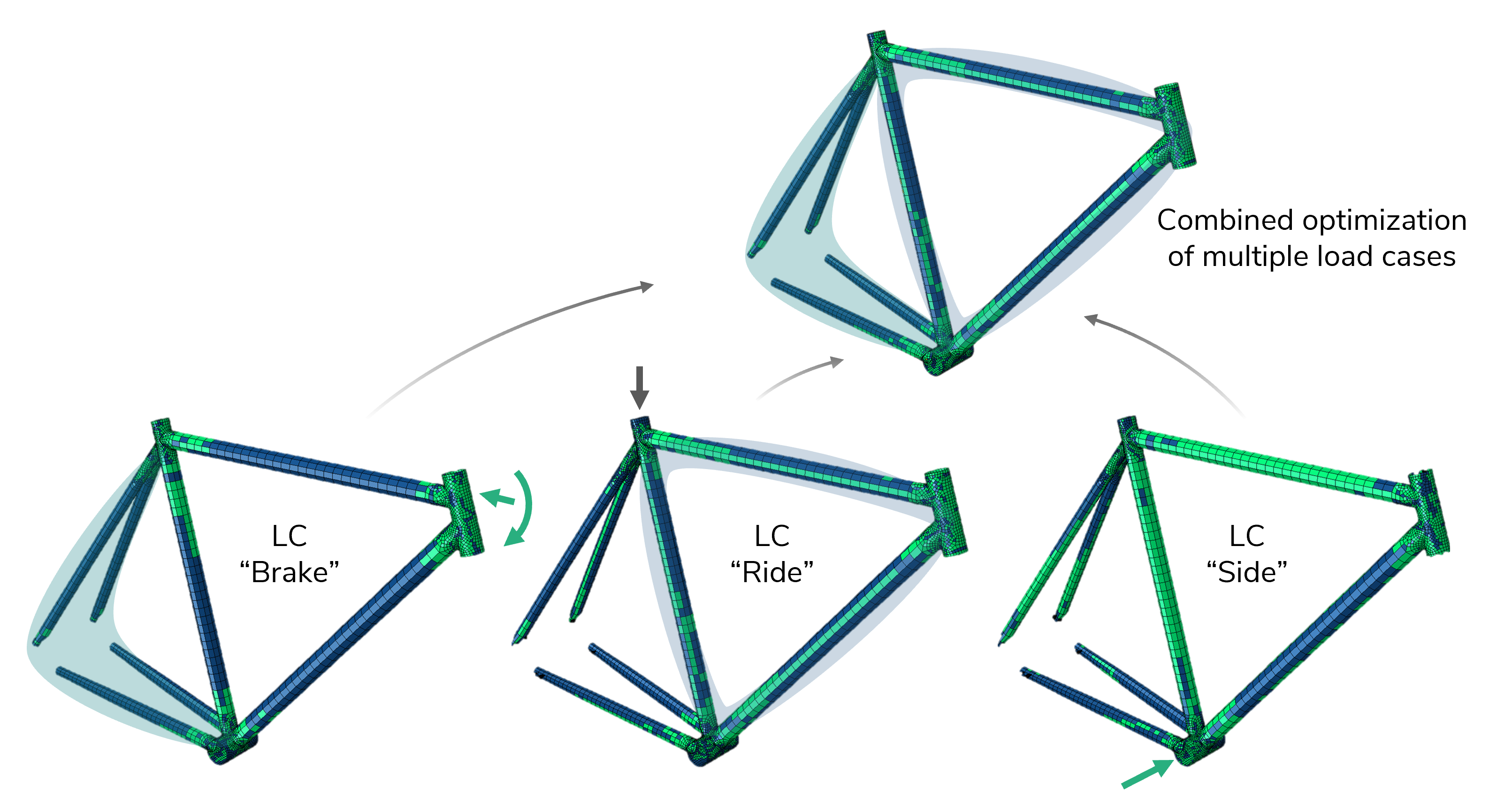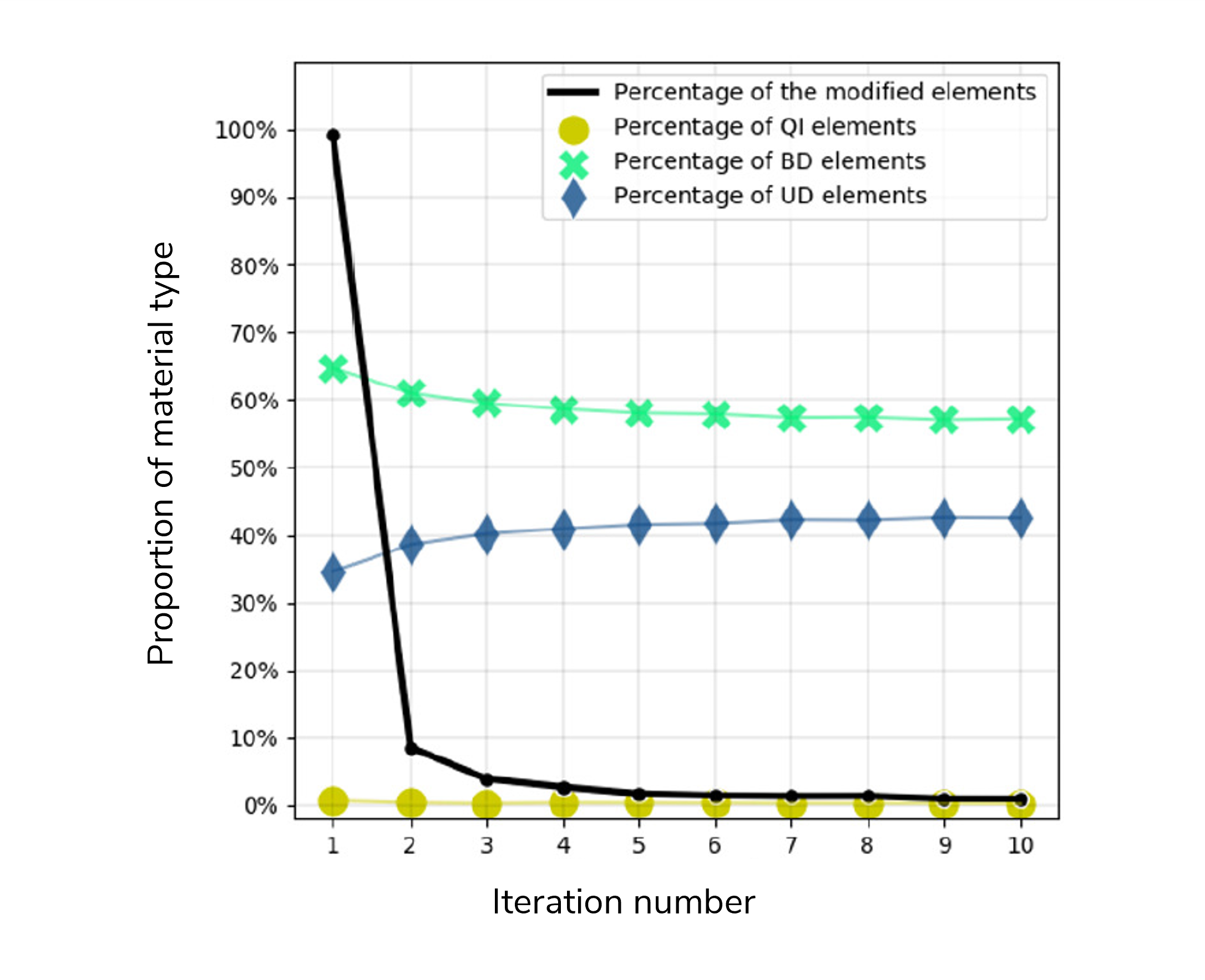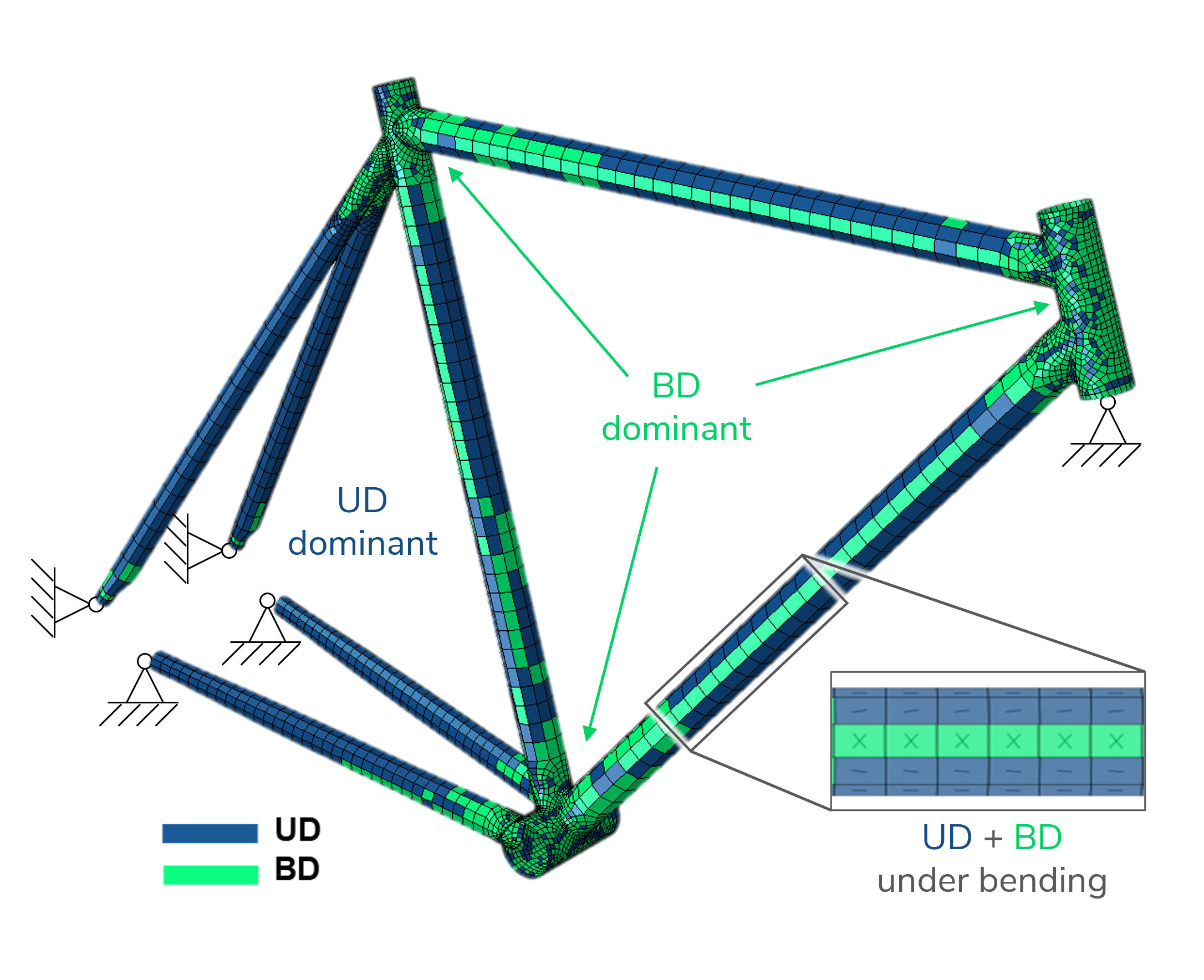Introduction
Continuously fiber-reinforced polymers (CoFRP) offer high weight-specific material properties, making them well suited for lightweight applications. To achieve a high level of lightweighting, optimization strategies need to be integrated into the design workflow. However, due to the anisotropic behavior of composite materials, common optimization approaches for engineering challenges, like topology or shape optimization, are not perfectly suited. Therefore, composite-specific optimization strategies are required to fully leverage their potentials for lightweighting.
CoFRP offer for optimization tasks two major degrees of freedom: layup orientation and layup type. A common approach to optimize material orientation is computer-aided internal optimization (CAIO) [1]. This approach aims for an element-wise minimization of shear stresses, leading to a laminate orientation well-suited for unidirectional (UD) layups. The material is therefore oriented locally in direction of the maximum principal stress. This approach is well-suited to optimize the material orientation for parts loaded with a single load case with UD layups only. However, other layup types and multiple loads or even load cases cannot be accounted for. However, both focus on the optimization for load cases with a single load only and do not take into account the orientation of the laminate for optimization.
The challenges for the optimization of CoFRP components are to account for multiple loads in multiple load cases, as well as to optimize both the layup type and layup orientation. Incorporating the layup type as a degree of freedom into the optimization allows for better exploitation of the lightweight potential of CoFRP components. Therefore, a combined optimization for the layup type and layup orientation is key.
An anisotropy analysis, which has originally been presented by Zink et al. [3], is facing this challenge. The result of this approach is a laminate design best-suited for manufacturing strategies like automated tape placement (ATP).
Recently, we have adopted and further developed in cooperation with KIT-FAST the anisotropy analysis. Now, SimuOpt, a tool that is capable to efficiently optimize layup orientation and layup types for CoFRP components exposed to multiple loads in multiple load cases, is available.

